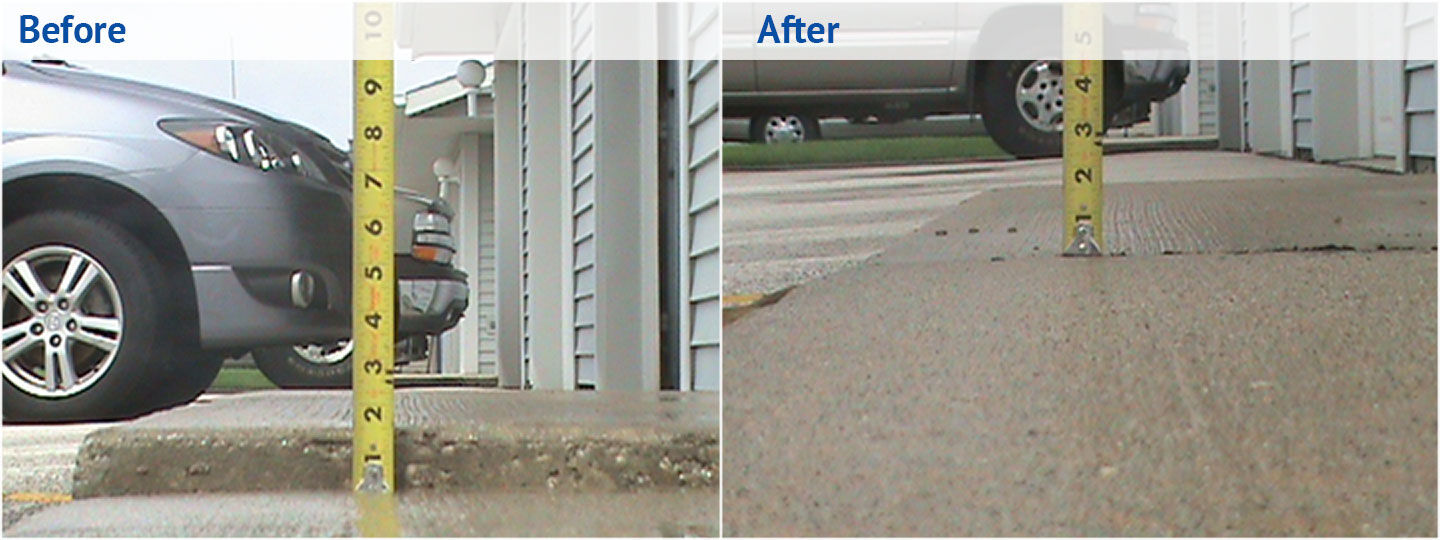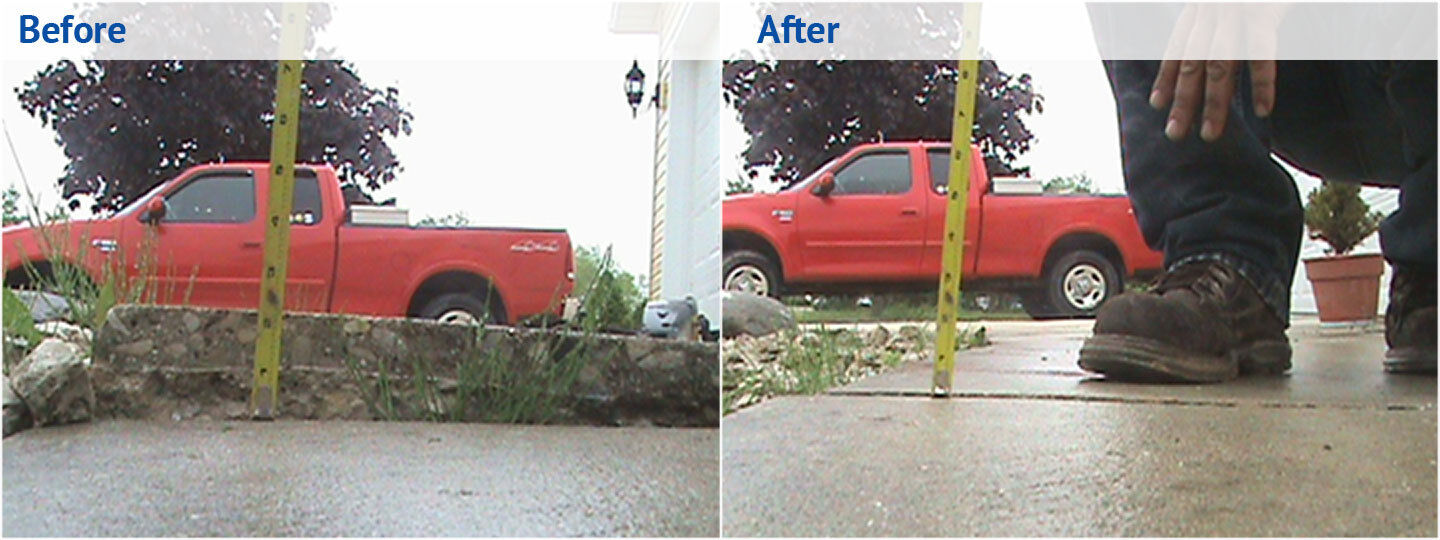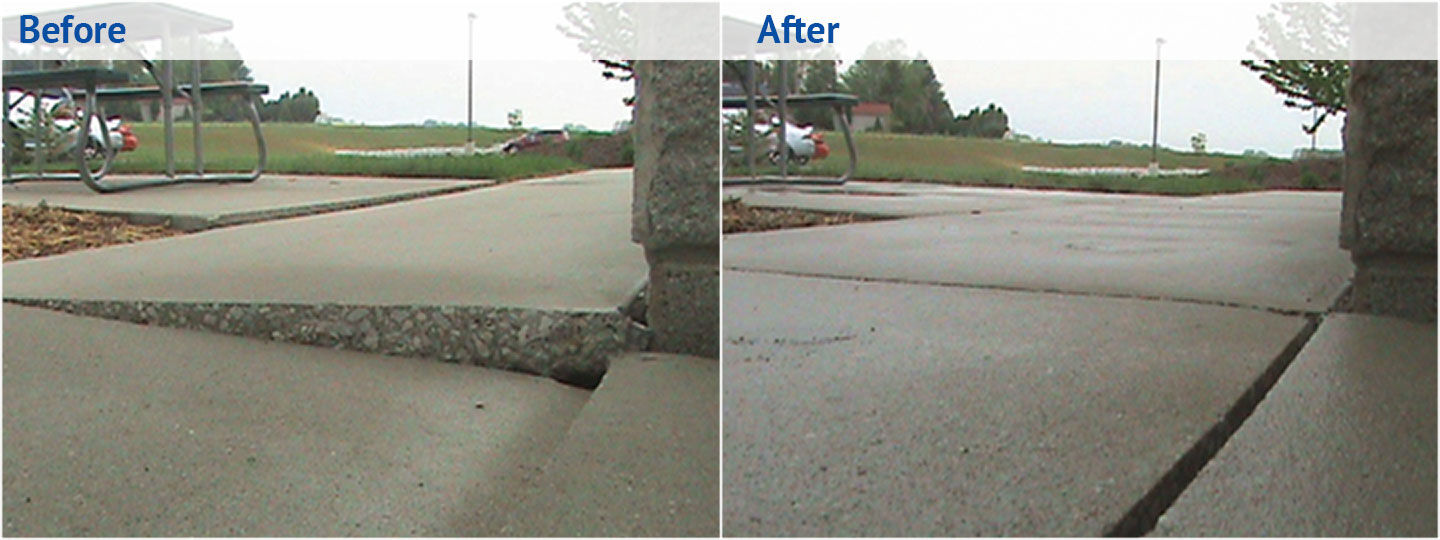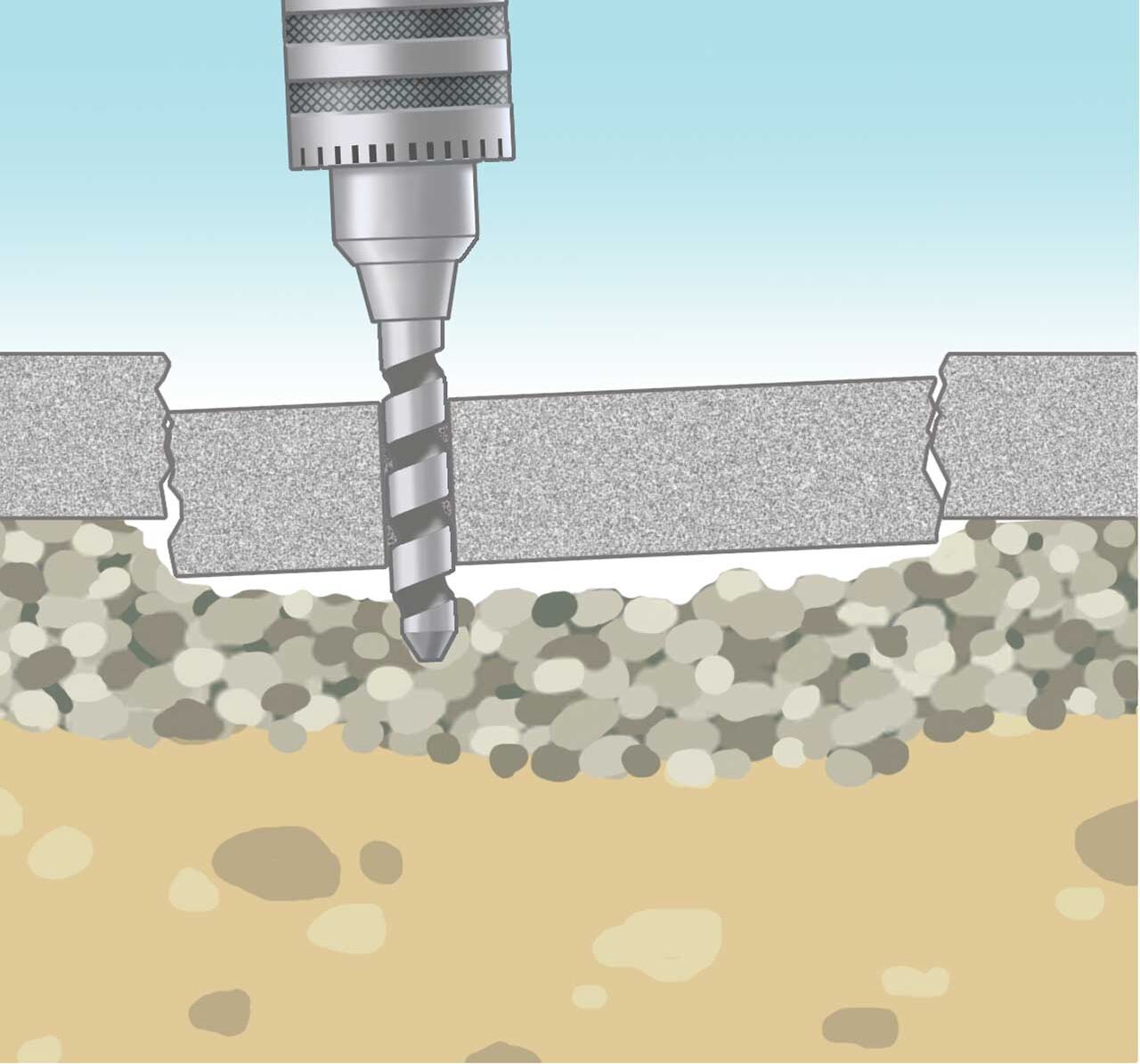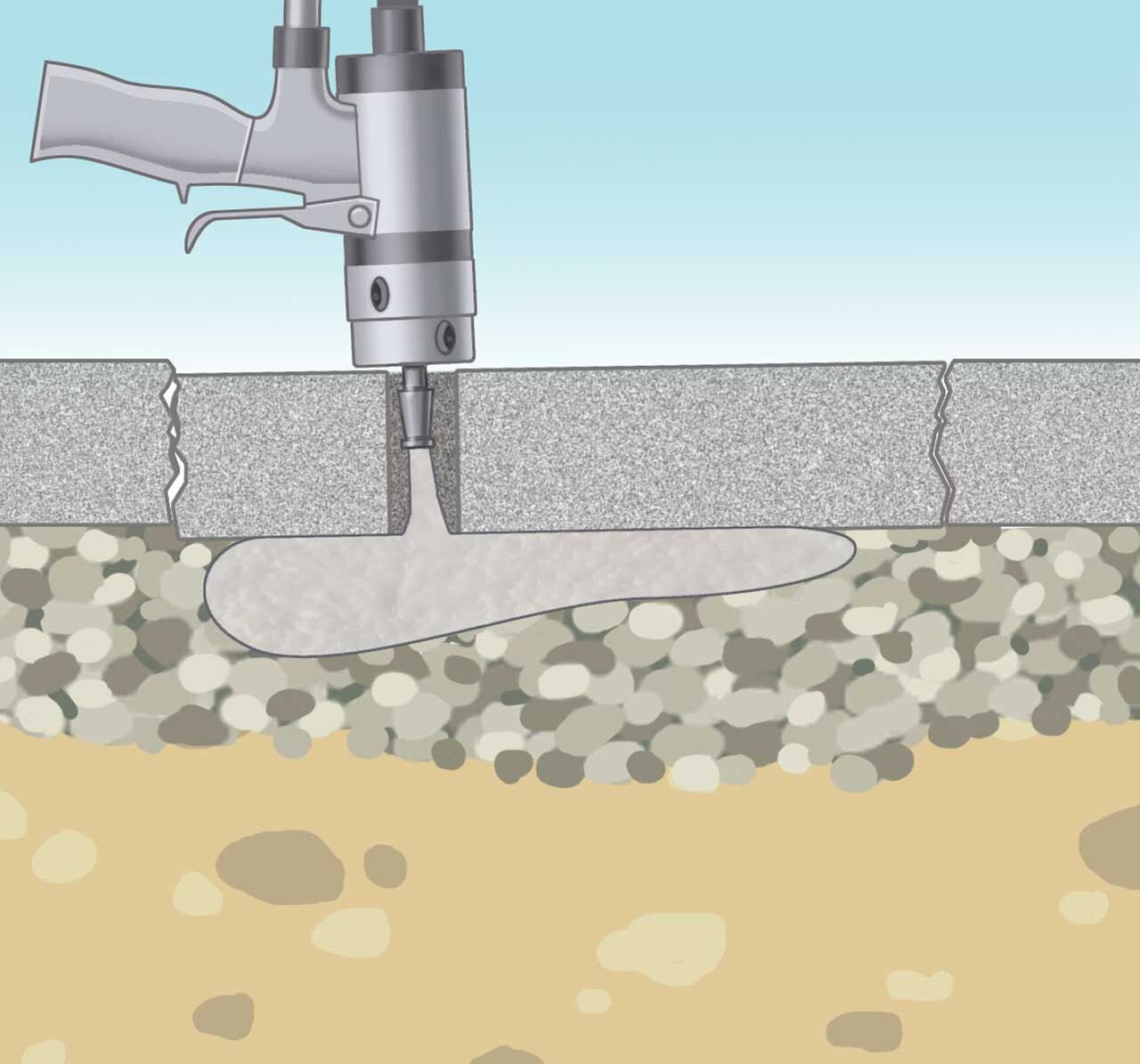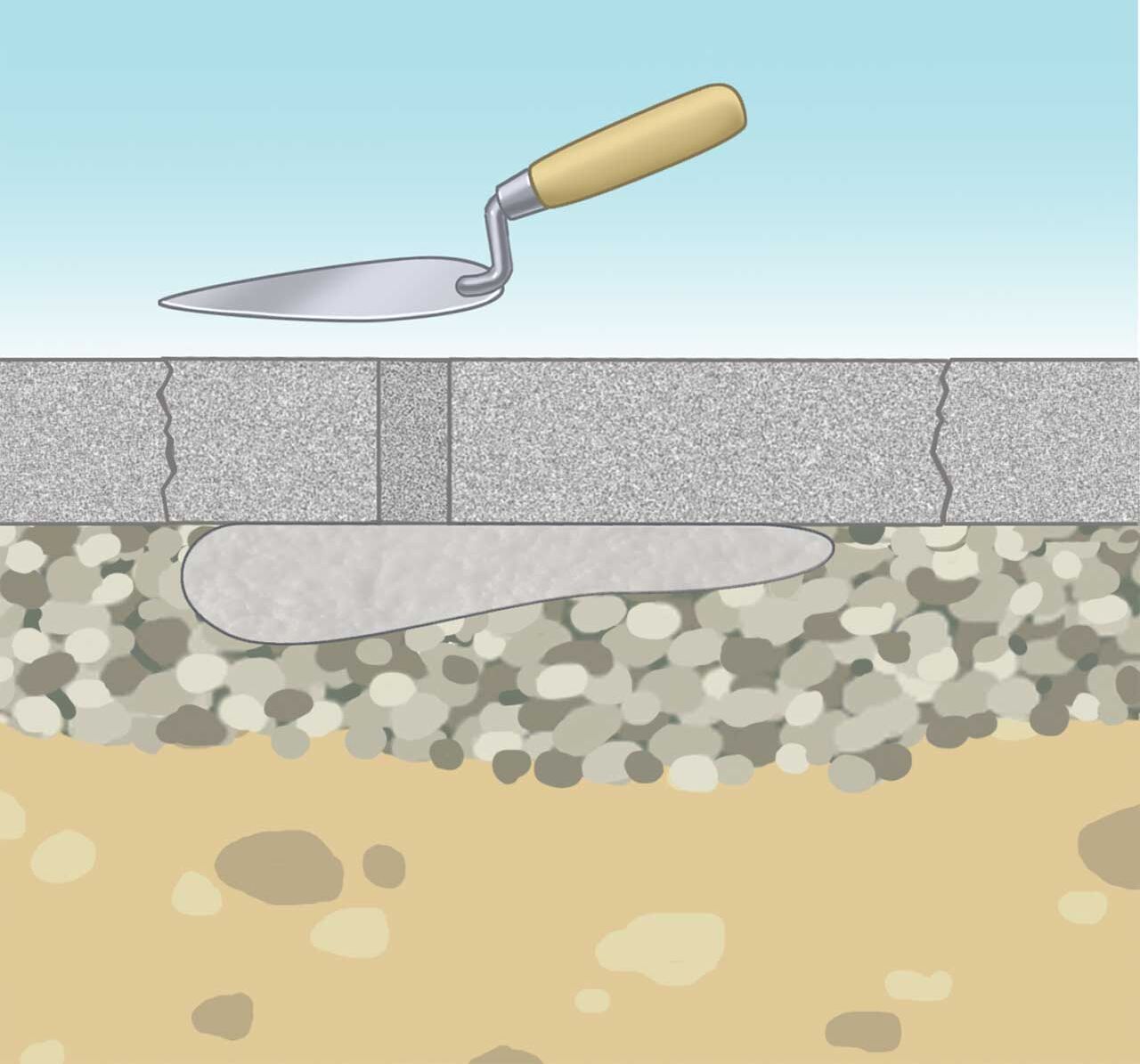If the concrete paving around your home is uneven or sunken, you are likely in need of concrete raising. Left untreated, settled concrete could potentially cause waterproofing issues and in some cases even structural damage. Uneven concrete is also unsightly and also creates unsafe trip hazards.
What is the best way to fix uneven concrete?
Our Polyurethane Concrete Raising solution effectively raises sinking and uneven concrete. The process utilizes advancements in material and technology to provide a reliable, quick, and nonintrusive fix. After we drill 5⁄8″ holes in the concrete slab, we inject Polyurethane Concrete Raising foam under the affected areas to raise the concrete. Lastly, we patch the holes with a special cement mix, so they are barely noticeable. When the components of polyurethane are mixed, a reaction causes the material to expand. That expanded foam fills any voids below the slab and raises the concrete. It’s almost always a one-day job that is simple, safe, and successful.
How Polyurethane Concrete Raising differs from Mudjacking
Mudjacking and replacing the concrete for many years were the default answers for concrete settling. Mudjacking involves pumping what is usually a mix of mud and dirt underneath a sunken concrete surface to lift it back up to where it’s supposed to be. This approach adds additional weight to the underlying soil, which can result in the concrete resettling. Our Polyurethane Concrete Raising process — sometimes called polyurethane slab jacking — is less disruptive and involves drilling considerably smaller holes in the concrete. Polyurethane concrete raising foam will not wash away from under the slab like mudjacking material. It is lightweight and is less likely to result in settling than adding heavy mud to already overburdened soil.
What about concrete replacement?
Our Polyurethane approach is less expensive than replacing the concrete, but that’s just one reason it’s preferable. Breaking up and replacing the old concrete and then pouring new concrete creates noise, dust, and an area unusable until the concrete cures to a point where it can support foot traffic and vehicles. Polyurethane, on the other hand, leaves no mess and cures quickly, making for a faster repair in an area that can be walked on and even driven over on the same day. Concrete replacement also might not be a permanent fix; if the concrete is moving because the ground is settling beneath it, it’s likely the same issue will return. Replacing the concrete will also look different than adjacent paving, whereas lifting existing concrete is barely even noticeable.
Why go with us for concrete raising?
When you notice that concrete around your home is settling or sinking, let U.S. Waterproofing help by providing a safe and dependable solution. We are a leading home improvement company in Chicagoland with an unmatched reputation and over 500,000 satisfied customers to our name. Schedule your free consultation online today!
